Connecting the Science to Managing LNAPL Sites a 3 Part Series
Sponsored by: Interstate Technology and Regulatory Council
This class was retired from live offerings in March 2022. The archived recording still provides valuable information and resources for those interested in learning more about LNAPL.
Connecting the Science to Managing LNAPL Sites - 3-Part Series
ITRC's updated LNAPLs (Light Non-Aqueous Phase Liquids) 3-part training course series is based on the ITRC guidance: LNAPL Site Management: LCSM Evolution, Decision Process, and Remedial Technologies (LNAPL-3, 2018) and focuses on connecting the science to managing LNAPL sites and helping you:
- Build upon your Understanding of LNAPL Behavior in the Subsurface (Part 1)
- Develop your LNAPL Conceptual Site Model and LNAPL Remedial Goals (Part 2)
- Select/Implement LNAPL Technologies (Part 3)
It is recommended that participants have a general understanding of hydrogeology and some familiarity with petroleum contaminated sites. The courses will build on your existing LNAPL knowledge and outline the framework for making LNAPL remediation and management decisions. It is expected that participants will attend this 3-part training series in sequence.
LNAPL Training Part 1: Understanding LNAPL Behavior in the Subsurface
Part 1 teaches how LNAPLs behave in the subsurface and examines what controls their behavior. Part 1:
- Explains what LNAPL data can tell you about the LNAPL and site conditions
- Covers how that information is applied to the development of an LNAPL conceptual site model (LCSM) (Part 2) and LNAPL technology selection (Part 3)
Relevant and practical examples are used to illustrate key concepts.
LNAPL Training Part 2: LNAPL Conceptual Site Models and the LNAPL Decision Process
Part 2 teaches participants how to develop an LNAPL conceptual site model (LCSM) and the overall framework for making LNAPL remediation and management decisions. Part 2:
- Discusses key LNAPL and site data
- Explains when and why those data may be important
- Covers how to effectively organize the data into an LCSM
Part 2 also discusses how to address LNAPL concerns by selecting appropriate goals and objectives, choosing applicable technologies, and assigning remedial performance metrics and endpoints.
LNAPL Training Part 3: Using LNAPL Science, the LCSM, and LNAPL Goals to Select an LNAPL Remedial Technology
Part 3 of the training teaches the importance of informed remedial technology selection and appropriate technology application. Part 3:
- Discusses remedial technology groups
- Introduces specific and new remedial technologies
- Reviews the technology selection process, how technologies can be combined to accelerate cleanup, and how the LCSM informs selection
A case study and examples demonstrate the use of these tools for remedial technology selection, implementation, and demonstration of successful remediation.
Training participants are encouraged to view the associated ITRC guidance, LNAPL Site Management: LCSM Evolution, Decision Process, and Remedial Technologies (LNAPL-3, 2018), prior to attending the class.
Accessibility, Recording, and Content Disclaimer
Rehabilitation Act Notice for Reasonable Accommodation
It is EPA's policy to make reasonable accommodation to persons with disabilities wishing to participate in the agency's programs and activities, pursuant to the Rehabilitation Act of 1973, 29 U.S.C. 791. Any request for accommodation should be made to the ITRC Training Program at 202-266-4932 or , preferably one week or more in advance of the webinar, so that EPA will have sufficient time to process the request. EPA would welcome specific recommendations from requestors specifying the nature or type of accommodation needed. Please note that CLU-IN provides both alternate phone call-in options and closed captioning for all webinars, and requests for these specific accommodations are not necessary.
Webinar Recording
By participating in this CLU-IN webinar, you automatically agree to authorize recording of audio and visual content presented during this live event and consent to subsequent use of this recording in the public domain by the U.S. Environmental Protection Agency. This recording may include questions, comments and poll responses provided by you during the live event in addition to your name, voice, image or likeness. This recording will be made available after the conclusion of the live event as part of the CLU-IN webinar archives, and will remain available indefinitely. If you do not wish to consent to the recording, please do not join the live event, and contact Jean Balent at 202-566-0832 or balent.jean@epa.gov to discuss your concerns.
Content Disclaimer
This webinar is intended solely to provide information to the public. The views and opinions expressed as part of this webinar do not necessarily state or reflect those of the U.S. Environmental Protection Agency. It is not intended, nor can it be relied upon, to create any rights enforceable by any party in litigation with the United States, or to endorse the use of products or services provided by specific vendors. With respect to this webinar, neither the United States Government nor any of their employees, makes any warranty, express or implied, including the warranties of merchantability and fitness for a particular purpose, or assumes any legal liability or responsibility for the accuracy, completeness, or usefulness of any information, apparatus, product, or process disclosed, or represents that its use would not infringe privately owned rights.
Presenters:
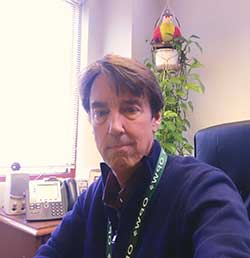 Randy Chapman, Virginia Department of Environmental Quality
Randy Chapman, Virginia Department of Environmental Quality
Randy Chapman is an Environmental Manager for the Petroleum Remediation Program at the Virginia Department of Environmental Quality (DEQ) Northern Regional Office in Woodbridge, Virginia. Randy has worked in the Tanks and Remediation Section since 1993 when he was hired as a Remediation Geologist. In 2015, Randy became manager of the Section. He currently oversees release investigations, environmental assessments, corrective actions, and closure of petroleum impacted sites as well as the Compliance and Enforcement activities associated with regulated petroleum UST and AST inspections. Randy has been actively involved in the development and implementation of numerous program guidance, including the issuance of the Virginia DEQ 2012 Case Closure Evaluation of Sites with Free Product guidance. Randy has presented at numerous technical conferences. Randy has been active in the ITRC since 2012 serving on the ITRC Petroleum Vapor Intrusion (PVI) team. Prior to the VA DEQ, Randy worked for South Carolina DHEC between 1990 and 1993. Randy earned a bachelor's degree in geology from Clemson University in Clemson South Carolina in 1988.
 Sanjay Garg, Shell
Sanjay Garg, Shell
Sanjay Garg is a consultant within Shell Global Solutions in Houston, Texas, which provides technical expertise to Shell’s global operations. He has been employed with Shell Oil Company and its subsidiary companies since 1999. Sanjay provides technical support on underground fate-and-transport of hydrocarbons including LNAPL management to various Shell businesses. He routinely provides training inside and outside Shell on several topics including LNAPL. Prior to Shell he was a Postdoctoral fellow and a Faculty Fellow at Rice University during 1999. He has been active in the ITRC LNAPL team since 2007. Sanjay earned an undergraduate degree in Civil Engineering from Gulbarga University in India in 1988 and a Ph.D. in Environmental Engineering from the University of Houston, Houston, Texas in 1998.
 Natasha Sihota, Chevron Energy Technology Company
Natasha Sihota, Chevron Energy Technology Company
Natasha Sihota is an Environmental Hydrogeologist with the Site Assessment and Remediation team of Chevron's Energy Technology Company in San Ramon, California. She provides technical guidance for domestic and international hydrocarbon remediation projects and supports internal technology research and development for site assessment and remediation tools. Natasha developed the surficial CO2 efflux approach for evaluating NAPL management through natural source zone depletion (NSZD). She has extensive experience with applying the NSZD concept to achieve different site management objectives. Natasha has been involved in developing guidance documents in the US for evaluating and applying the NSZD concept through the American Petroleum Association, ITRC, and other state groups. She has provided NSZD training to environmental regulators, industry colleagues, and university groups. Natasha earned a bachelor's degree in hydrogeology, ecology and environmental chemistry from the University of British Columbia, Canada in 2009 and a Ph.D. in contaminant hydrogeology in 2014.
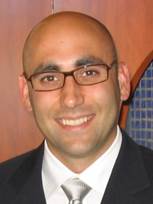 Matthew Rousseau, GHD
Matthew Rousseau, GHD
Matthew Rousseau is a Senior Associate Engineer and NAPL Technical Specialist with GHD based in Windsor, Ontario, Canada. Since 2003, his work has focused on the preparation of LNAPL Conceptual Site Models (LCSMs), the design of LNAPL site investigation programs, LNAPL mobility/recoverability/stability assessments, natural source zone depletion (NSZD) evaluations, as well as the development of LNAPL remediation and management strategies with a focus on sustainable risk-based solutions. He co-founded GHD?s petroleum NAPL technical group and currently advises on NAPL projects globally. In this capacity, Matt regularly provides training related to LNAPL behaviour, site characterization and remediation both internally to GHD staff and externally to clients, regulators, and other practitioners. He has also been involved in the development of LNAPL technical guidance documents in the U.S., Canada, and Australia including contributions to the ITRC LNAPL Team and more recently as a member of the ITRC LNAPL Update Team. Matt has both B.A.Sc. (1997) and M.A.Sc. (2000) degrees in Environmental Engineering from the University of Windsor in Windsor, Ontario, Canada, and is a licensed Professional Engineer (P.Eng.) in the Province of Ontario.
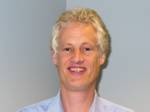 Ian Hers, Hers Environmental Consulting
Ian Hers, Hers Environmental Consulting
Dr. Ian Hers, as Principal and Founder of Hers Environmental Consulting, Inc., has over 30 years experience in soil vapour intrusion characterization and mitigation, assessment and management of LNAPL impacted sites, and assessment of natural attenuation and biodegradation including monitored natural attenuation and natural source zone depletion. Dr. Hers has a deep knowledge of soil vapour intrusion and has assisted clients worldwide throughout his career in developing guidance, models and methods. He has published over 25 technical papers and guidance documents on vapour intrusion. He has outstanding experience in assessment of natural attenuation of chemicals and management of LNAPL contamination and has supported private and public clients in development of guidance and protocols in these areas. He has conducted numerous applied R&D projects and supported developed of guidance worldwide for regulatory agencies in Canada, US, UK and Israel, for organizations such as American Petroleum Institute and Electric Power Research Institute, and oil and gas clients. Dr. Hers holds a Ph.D. from the University of British Columbia, has served as lecturer at UBC, and is on the Board of Directors for the Science Advisory Board for Contaminated Sites in British Columbia.
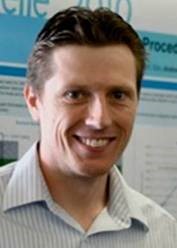 Andrew Kirkman, BP
Andrew Kirkman, BP
Andrew Kirkman is the lead LNAPL Technical Specialist for BP America located in Naperville, IL. Andrew joined BP in 2012 and currently supports LNAPL related site remediation, educational advocacy and research efforts. Previously, was the Global LNAPL Technical lead for AECOM Environment. Andrew worked as a consultant at AECOM for 14 years. Andrew focused on characterization and remediation of railroad, manufactured gas plant tie treatment facilities petroleum terminals and refineries in North America as well as Thailand, Indonesia, Australia, New Zealand, Brazil, Europe and United Arab Emirates. Andrew has led and participated in multiple industry advocacy efforts related to LNAPL, these include: 1) chairing the ASTM task group that created the standard for estimation of LNAPL transmissivity and the task group that is revising the ASTM Standard guidance document related to LNAPL Conceptual Site Models and Remediation Strategies; 2) generating publications for Applied NAPL Science Review, American Petroleum Institute, and Groundwater Monitoring and Remediation and; 3) presenting training sessions and technical discussions at regulatory agencies, conferences and for industry on topics such as use of NAPL transmissivity, LNAPL baildown tests, core analyses and laser induced fluorescence technology and improved LNAPL conceptual site models. Andrew has supported ITRC through publication review and educational materials since 2008 and became an ITRC trainer in 2012. Andrew earned a bachelor's degree in Geology and Geological Engineering from the University of Minnesota in Minneapolis, Minnesota in 1998.
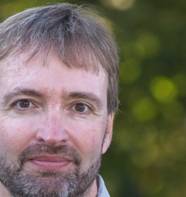 Eric Nichols, Substrata LLC
Eric Nichols, Substrata LLC
Eric M. Nichols , PE, is a principal at Substrata LLC in Newfields, New Hampshire. He has characterized and remediated contaminated sites since 1985. Eric founded Substrata LLC in 2014. Previously, he worked for ARCADIS and LFR from 1996-2014, and for Weiss Associates from 1985-1995. Eric serves as a technical resource for LNAPL and petroleum characterization, remediation, natural source zone depletion, vapor intrusion, and litigation support. Eric has taught short courses for several organizations, including the U.S. Environmental Protection Agency, the National Ground Water Association, the American Society for Testing and Materials, the New England Interstate Water Pollution Control Commission, the American Petroleum Institute, and the University of California Extension. Eric has contributed to ITRC documents and training since 1998 as a member and trainer for the Fuel Oxygenates Team, the LNAPL Team, and the Petroleum Vapor Intrusion Team. Eric has received Industry Appreciation Awards for his service on ITRC teams. Eric earned a bachelor's degree in Civil Engineering from the University of California, Berkeley, in 1982 and a master’s degree in Civil Engineering from the Massachusetts Institute of Technology in 1985. He is a licensed professional engineer in California.
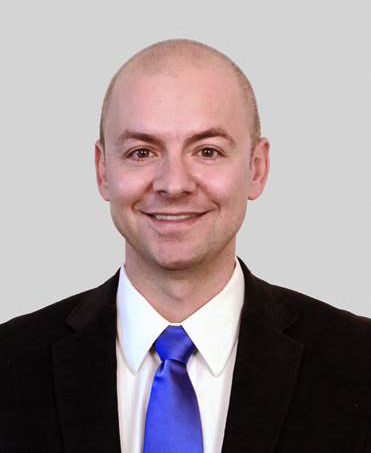 Erik Gessert, Terracon Consultants, Inc.
Erik Gessert, Terracon Consultants, Inc.
Erik Gessert is a senior environmental engineer for Terracon Consultants, Inc., in Wheat Ridge, Colorado. Since 2002 Erik has worked in the environmental industry successfully managing remediation projects. Erik's primary responsibilities include leadership, technical evaluation, and project management of remediation, and specifically, LNAPL site management projects. Prior to rejoining Terracon in 2018, Erik was the supervisor and technical lead for the Colorado Division of Oil and Public Safety Remediation team where he was responsible for the successful implementation of enhanced risk-based closure criteria for the program, the implementation of the Recognized Environmental Professional program, and the incorporation of CSM development, high resolution site characterization, and green and sustainable remediation into the program's core problem solving criteria. Erik earned a bachelor's degree in environmental engineering from the University of Wisconsin-Madison in 2001 and his professional engineering license from the State of Colorado in 2007.
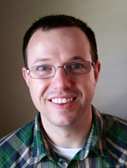 Jonathon Smith, AECOM
Jonathon Smith, AECOM
Jon Smith is a Technical Leader with AECOM, located in Southfield, Michigan. Jon has worked in environmental site investigation and remediation since 2003, specializing in characterization and remediation of sites with nonaqueous phase liquids (NAPLs). His experience includes the planning and execution of site investigations using a diverse set of characterization and data evaluation techniques, development of conceptual site models, assessment of NAPL mobility and recoverability, evaluation of natural source zone depletion (NSZD), and remediation technology screening and implementation. Jon has helped lead applied field research projects on LNAPL tracer testing, LNAPL transmissivity measurement, NSZD, and in situ bioremediation. He has provided technical training on NAPLs to several regulatory agencies within the U.S. and Canada and has served as a technical leader on NAPL projects in the U.S., Canada, Europe, Australia, and Western Asia. Jon earned a bachelor's degree in geology from Michigan State University in East Lansing, Michigan in 2002.
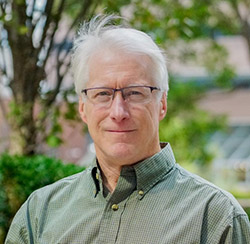 Tom Fox, Colorado Division of Oil and Public Safety
Tom Fox, Colorado Division of Oil and Public Safety
Tom Fox is an Environmental Protection Specialist in the Division of Oil and Public Safety (OPS) within the Colorado Department of Labor and Employment in Denver, Colorado. Tom has worked with the OPS since 2007. General duties include reviewing site characterization reports and corrective action plans; and providing guidance to optimize technical and economic feasibility of corrective actions, implementation/operation of systems, and reimbursement via the state fund. In addition, Tom has been involved in special projects such as developing electronic reporting formats, assessing the success of carbon injection for petroleum cleanups, and modifying Colorado's policy on LNAPL recovery. Prior to joining OPS, Tom was a petroleum geologist with ARCO from 1982-1986 doing exploration in the western US, and an environmental consultant on petroleum projects for several companies during 1986-2007. Tom has authored several articles, papers and presentations on assessment and corrective action techniques. Tom earned a bachelor's degree in earth science (geology) from Millersville State College (Pennsylvania) in 1980 and a master's degree in geology from Michigan State University in 1982. He maintains a license as a Professional Geologist in Wyoming.
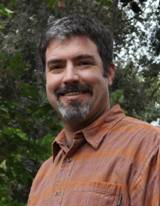 Rick Ahlers, GEI Consultants
Rick Ahlers, GEI Consultants
Rick Ahlers is a Technical Expert with GEI Consultants, located in San Diego, California. He has been practicing groundwater and vadose-zone hydrology. He has worked for many Oil and Gas clients on sites ranging from service stations to pipelines to bulk terminals to refineries as well as for Industrial clients where LNAPL and chlorinated DNAPL source zones are the concern. Using emerging assessment techniques for petroleum hydrocarbon sites including natural source zone depletion (NSZD), natural attenuation of hydrocarbon and oxygenate groundwater plumes, and NAPL transmissivity allows him to evaluate alternative endpoints for NAPL management. He also uses experience gained across many sites with more common remediation technologies such as AS/SVE, MPE, and skimming, to select the best technology for the site and project and guide implementation to efficiently achieve remedial goals. Rick leads the global NAPL management community of practice in Arcadis' Technical Knowledge and Innovation network. Rick started his career at Lawrence Berkeley National Laboratory characterizing and modeling multi-phase flow in porous and fractured media. Rick has been active in the ITRC since 2006 first as a member of the BioDNAPL team and then as a member of the LNAPL team. He is also a member of the scientific advisory board for the AEHS West Coast International Conference on Soil, Water, Energy, and Air. Rick earned a bachelor's degree in physics from Occidental College in Los Angeles, California in 1990 and a master's degree in Civil Engineering specializing in groundwater hydrology from the University of California, Berkeley in 1994. Rick is a California Registered Civil Engineer.
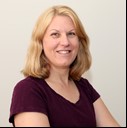 Joann Dyson, GHD Services Inc.
Joann Dyson, GHD Services Inc.
Joann Dyson, Ph.D., is an Environmental Specialist with GHD in the Contaminated Assessment & Remediation service line and is located in Durham, North Carolina. Although new to GHD in 2019, she has been working at LNAPL-contaminated sites since 1999. Joann specializes in investigation and remediation of LNAPL sites, including investigation of soil, groundwater and vapor contamination, conceptual site model development, and remediation design for techniques such as excavation and multi-phase extraction. She has performed many risk-assessments at contaminated sites, determining the best solution for the site, client and regulatory agency. She has also been involved with special projects such as international LIF investigations; state terrorism preparedness, including WMD debris management; emergency response ICS training for cities, counties, and government agencies such as the Minnesota Pollution Control Agency (MPCA), and environmental conference presentations. Joann has been active in the ITRC since 2016 as a member of the LNAPL Update team and the Implementing Advanced Site Characterization Tools (ASCT) team. She received the 2017 Industry Affiliates Program (IAP) Award for contributions to the LNAPL Update team. Prior to environmental consulting, Joann was an Assistant Professor of Physics at Beloit College (1996-1998) and Gettysburg College (1994-1996). Joann earned a Bachelor of Science degree in physics from Wake Forest University in Winston-Salem, North Carolina in 1988 and a Ph.D. in physics from the University of Georgia in Athens, Georgia in 1994.
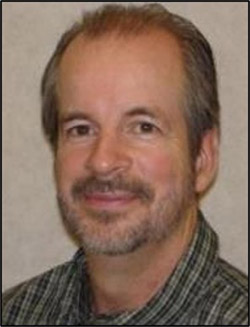 Lloyd Dunlap, Trihydro
Lloyd Dunlap, Trihydro
Lloyd E. Dunlap is a Senior Geologist with Trihydro in Kansas City, Missouri. Lloyd has worked for Trihydro since 2015. Lloyd works on special projects in the hydrocarbon remediation area. He has experience in environmental, energy, and regulatory issues, plus RCRA Corrective Action and Strategic Planning for complex sites. Lloyd worked in multiple environmental positions at BP from 1982 until 2012. He managed projects under the jurisdiction of Resource Conservation and Recovery Act (RCRA), Comprehensive Environmental Response, Compensation, and Liability Act (CERCLA), the European Union, administrative orders on consent, and state programs in nearly every state. He has authored numerous publications and often speaks at environmental conferences about regulatory issues and trends. Since 2015, Lloyd has been a member of the ITRC Light Non-aqueous Phase Liquids (LNAPL) and serves as an ITRC trainer. Lloyd earned a bachelor's degree in Geology from the University of Kansas in Lawrence, Kansas, in 1975 and a Master of Science in Geology/Hydrogeology from Kansas State University in Manhattan, Kansas, in 1977. Lloyd is a Professional Geologist in the State of Florida.
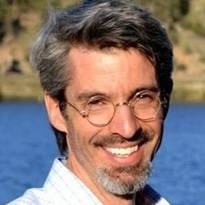 Tom Palaia, Jacobs Engineering
Tom Palaia, Jacobs Engineering
Tom Palaia is a Principal Technologist at Jacobs Engineering in Denver, Colorado. Since 1992, Tom has worked at Jacobs/CH2M specializing in characterization and remediation of petroleum non-aqueous phase liquids (NAPL). As the Petroleum NAPL Community of Practice leader for Jacobs, Tom's central role for the firm is focused on quality control and ensuring that state-of-the-practice remediation approaches are implemented on projects world-wide. Additionally, he is responsible for participating in technical workgroups, conducting seminars, and presenting new technology applications to site owners and regulatory agencies. Tom has dedicated a large part of his career to facilitating application of best practice and technology transfer, and training of many practitioners within CH2M/Jacobs. Tom is passionate about the future direction of advanced technology for remediation and is working hard to expedite the advance and practical use of new science. Tom is new to ITRC's training team, active in the ITRC LNAPL Update Team since 2016. Tom earned a bachelor's degree in civil engineering from the Lafayette College in Easton, Pennsylvania in 1990 and a master's in environmental engineering from the University of Massachusetts in Amherst, Massachusetts in 1992. Tom is a registered Professional Engineer in the State of Colorado and Province of Alberta, Canada.
Moderator:
ITRC Training Program (itrc@itrcweb.org)
Webinar Slides and References:
Webinar Slides and References:
-
 ITRC LNAPL-Part1 020822pdf (10.1MB/PDF)
ITRC LNAPL-Part1 020822pdf (10.1MB/PDF)
-
 ITRC LNAPL-Part2 041020pdf (8.54MB/PDF)
ITRC LNAPL-Part2 041020pdf (8.54MB/PDF)
-
 ITRC LNAPL Part3 110921pdf (6.33MB/PDF)
ITRC LNAPL Part3 110921pdf (6.33MB/PDF)
Additional Resources:
Thank you for participating in our webinar. We would like to receive any feedback you might have that would make this service more valuable.
Help & FAQs
Zoom Resources
This seminar will be delivered through Zoom. Participants are encouraged to update to the latest version of the Zoom application for the best experience. If you are unable to install the Zoom application, most functions will be available if you join just using a modern web browser such as Chrome, Edge or Firefox. We strongly encourage you to run the Zoom Meeting Test prior to attending this seminar. Technical support on the day of the seminar will be very limited and subject to significant delays.
Rehabilitation Act Notice for Reasonable Accommodation
It is EPA's policy to make reasonable accommodation to persons with disabilities wishing to participate in the agency's programs and activities, pursuant to the Rehabilitation Act of 1973, 29 U.S.C. 791. Any request for accommodation should be made to the ITRC Training Program at 202-266-4932 or , preferably one week or more in advance of the seminar, so that EPA will have sufficient time to process the request. EPA would welcome specific recommendations from requestors specifying the nature or type of accommodation needed, such as closed captioning.
with any additional questions
If you have a suggested topic or idea for a future CLU-IN internet seminar, please contact:
Technology Integration and Information Branch
PH: 202-566-0832 | Email: balent.jean@epa.gov
Technology Integration and Information Branch
PH: 202-566-0875 | Email: adam.michael@epa.gov




